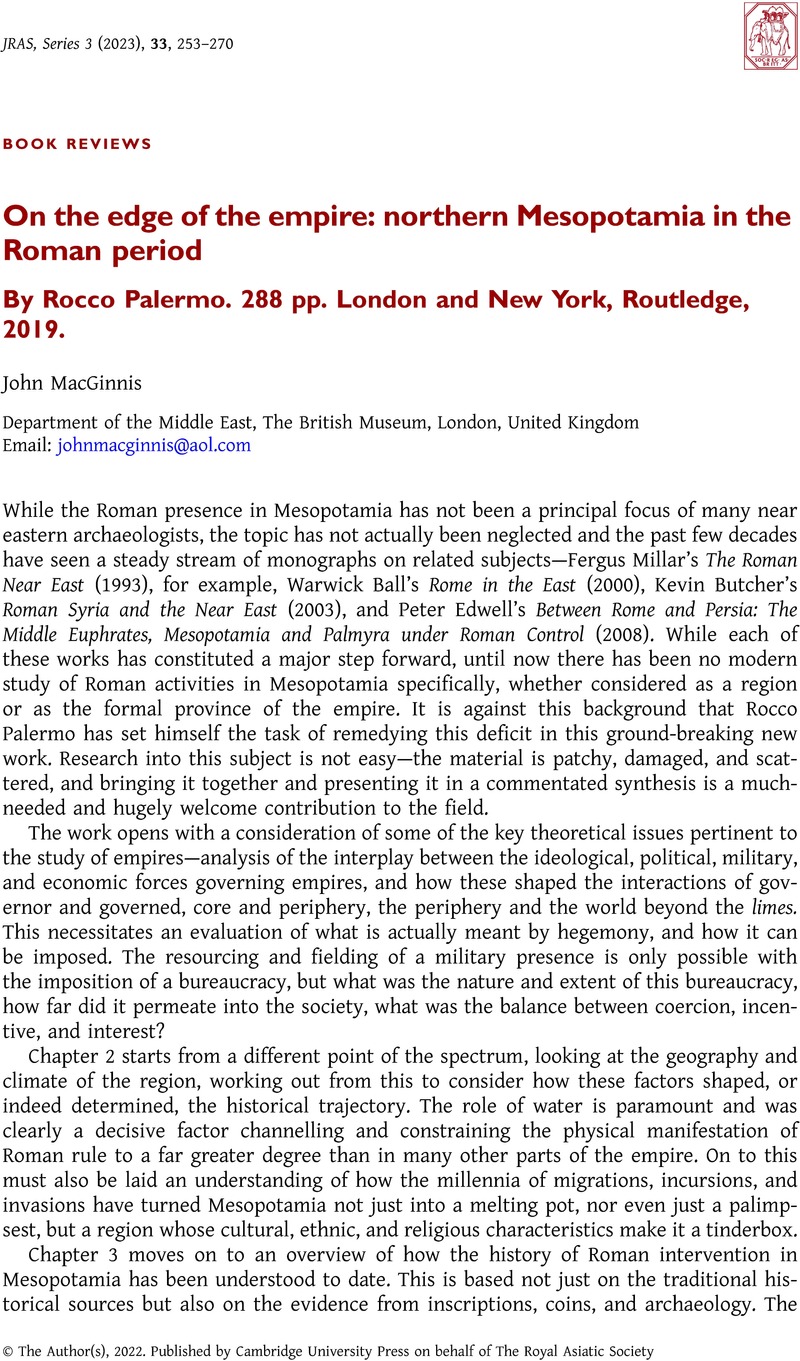No CrossRef data available.
Article contents
On the edge of the empire: northern Mesopotamia in the Roman period By Rocco Palermo. 288 pp. London and New York, Routledge, 2019.
Review products
Published online by Cambridge University Press: 11 April 2022
Abstract

Information
- Type
- Book Review
- Information
- Copyright
- Copyright © The Author(s), 2022. Published by Cambridge University Press on behalf of The Royal Asiatic Society
References
1 For the site, see MacGinnis, J. et al. , ‘Excavations at the Darband-i Rania pass, Iraqi Kurdistan: report on the 2016 and 2017 seasons’, Iraq 82 (2020)CrossRefGoogle Scholar.
2 See Oates, D., Studies in the Ancient History of Northern Iraq, 2nd edn (London, 1968; reprinted 2008), p. 71Google Scholar.
3 See Al-Yaqoobi, D., Shepperson, M. and MacGinnis, J., ‘Excavations on the fortifications of the Citadel of Erbil’, in Proceedings of the 10th International Congress on the Archaeology of the Ancient Near East, (eds) Horejs, B. et al. (Wiesbaden, 2018), Vol. 2, pp. 452–454Google Scholar.
4 For more detailed references, see MacGinnis, J., ‘Hellenistic rule and Roman operations in Babylonia and Assyria’, in The Oxford Handbook on Hellenistic and Roman Syria (Oxford, in press), n. 18Google Scholar.
5 See now Baird, J. A., Dura-Europos (London, 2018)Google Scholar and James, S., The Roman Military Base at Dura-Europos, Syria: An Archaeological Visualisation (Oxford, 2019)CrossRefGoogle Scholar.
6 An additional important work, evidently in press at very much the same time as the present work, is Schlude, J. M. and Rubin, B. B., Arsacids, Romans and Local Elites (Oxford, 2017)Google Scholar; the chapter by Edwell is particularly valuable for the numismatic evidence.
7 With regard to the Upper Tigris, one can add that the excavations at Ziyaret Tepe, 60 km east of Diyarbakir, revealed an occupation dated by numismatics from the third to sixth centuries ad: see, for now, Matney, T. et al. , ‘Excavations at Ziyaret tepe, Diyarbakir Province, Turkey, 2011–2014 seasons’, Anatolica 41 (2015), pp. 141–145Google Scholar.
8 A minor point: the caption to Figure 5.3 should state that this is a Corona satellite image, not a photograph taken from the east side of the Tigris.


